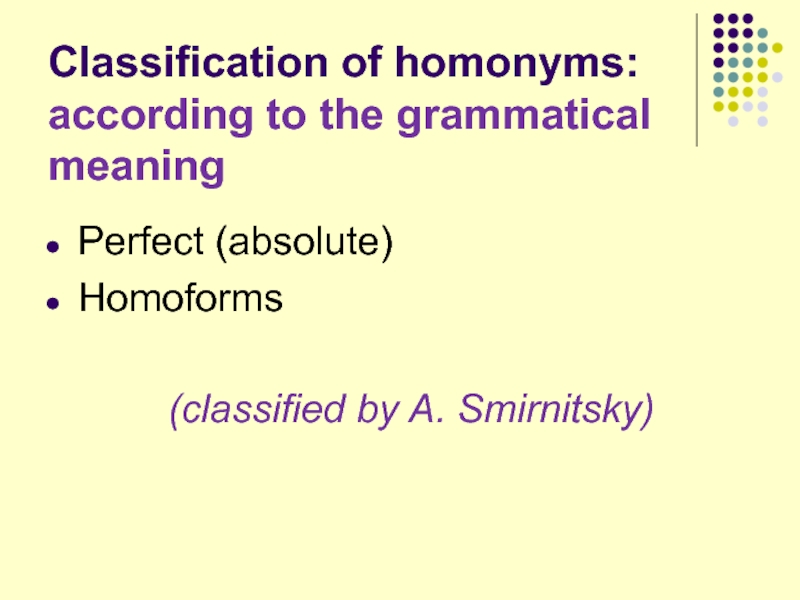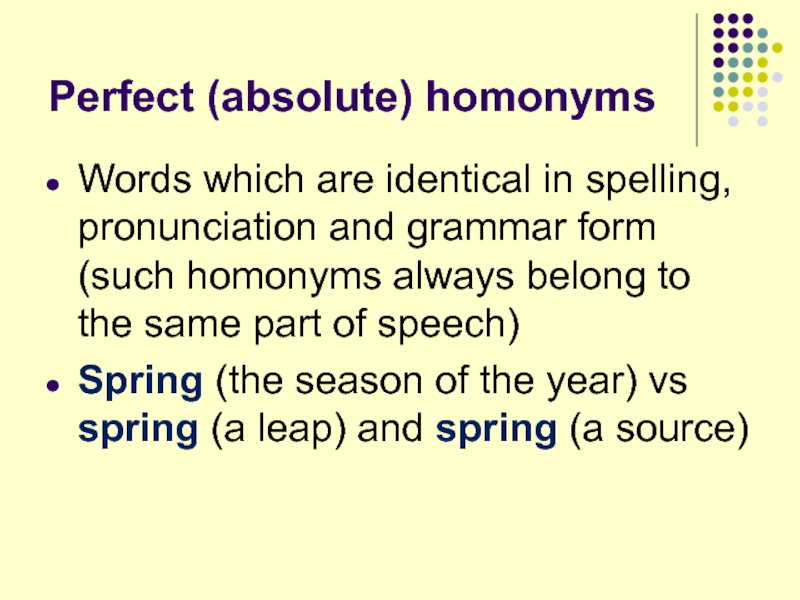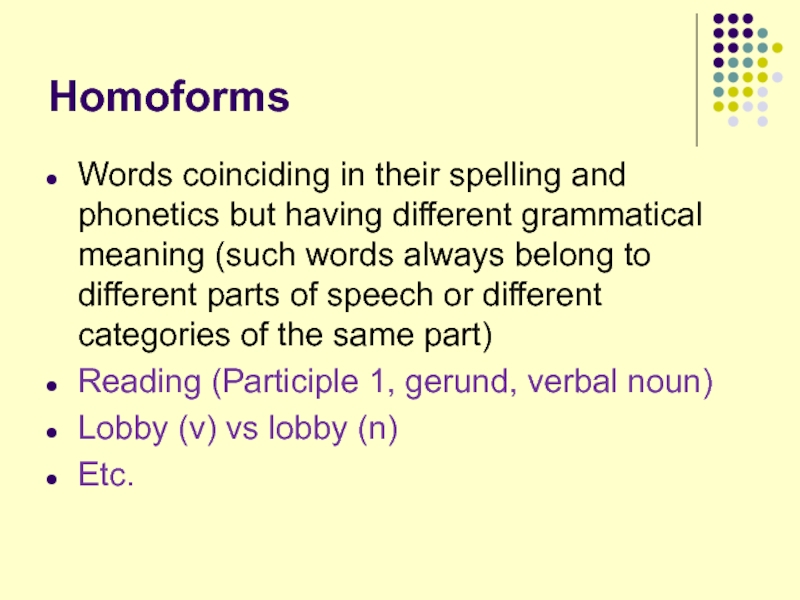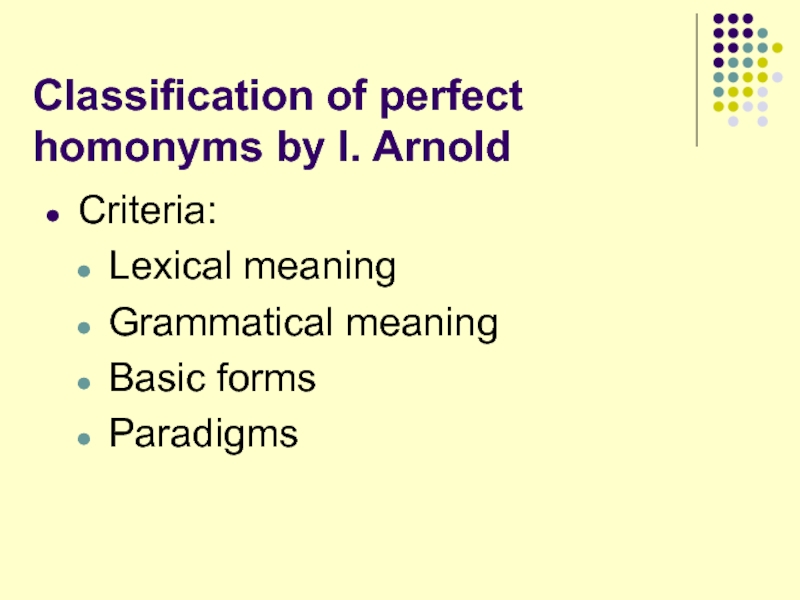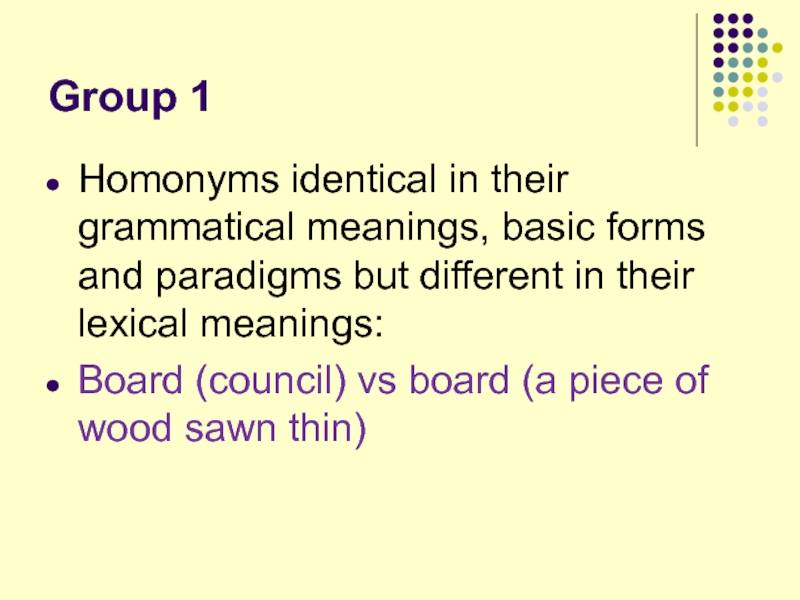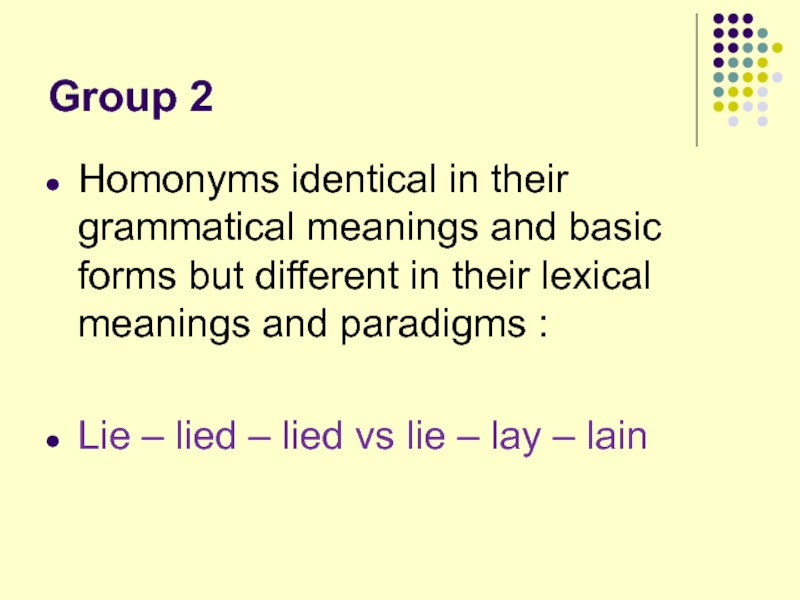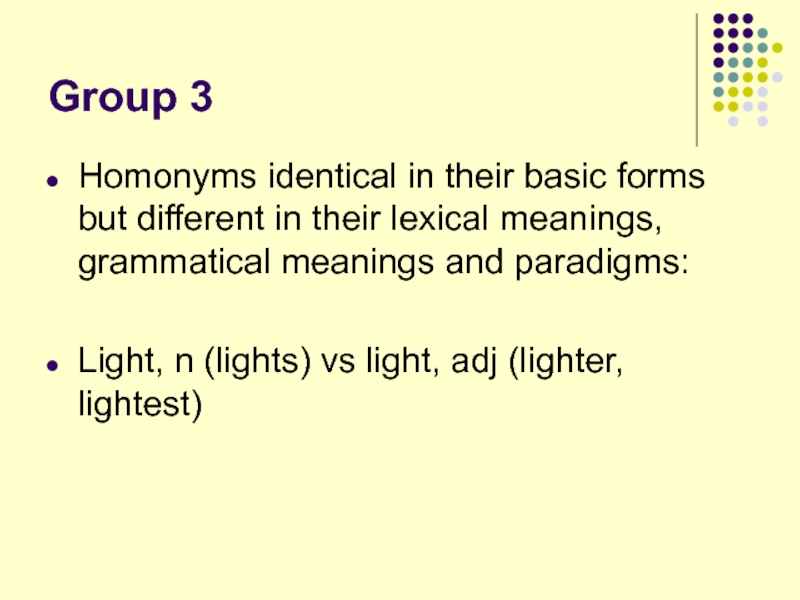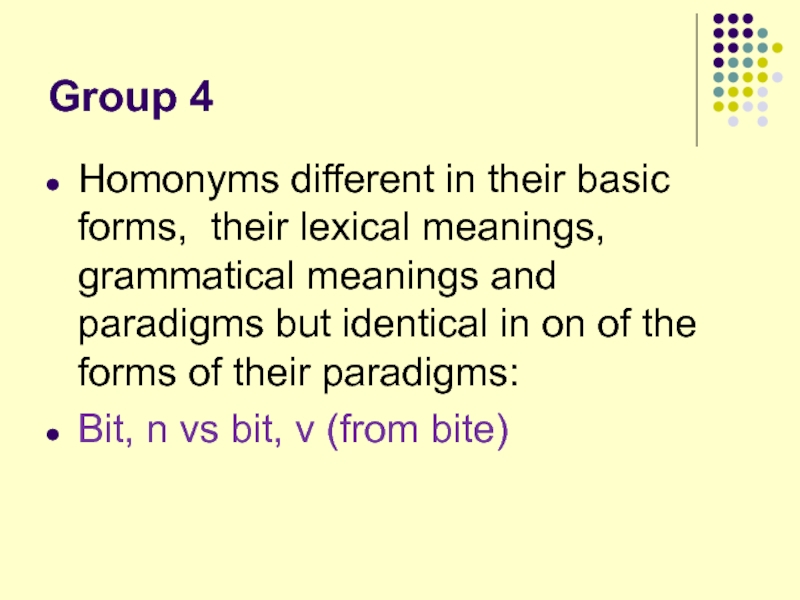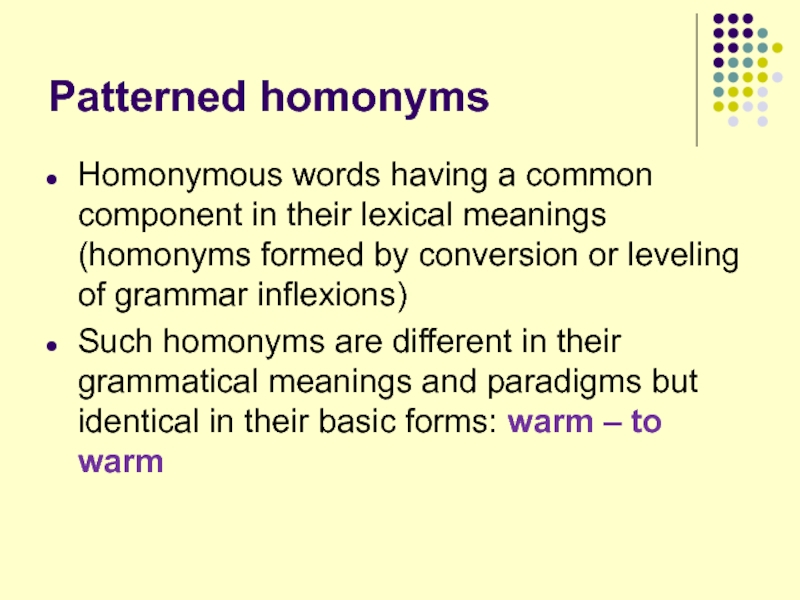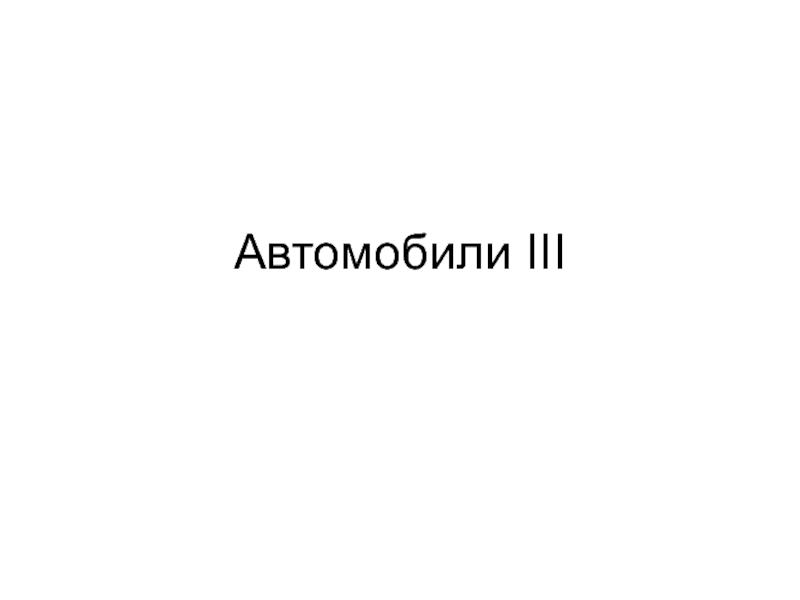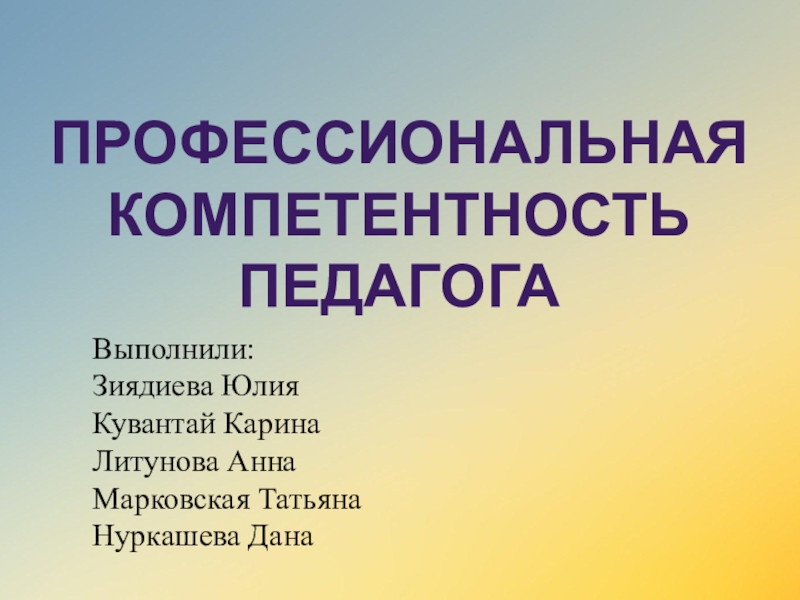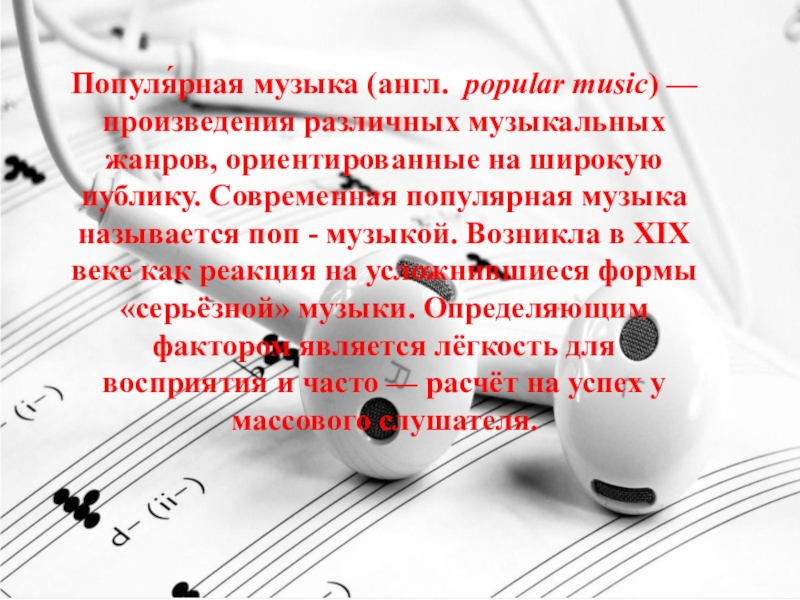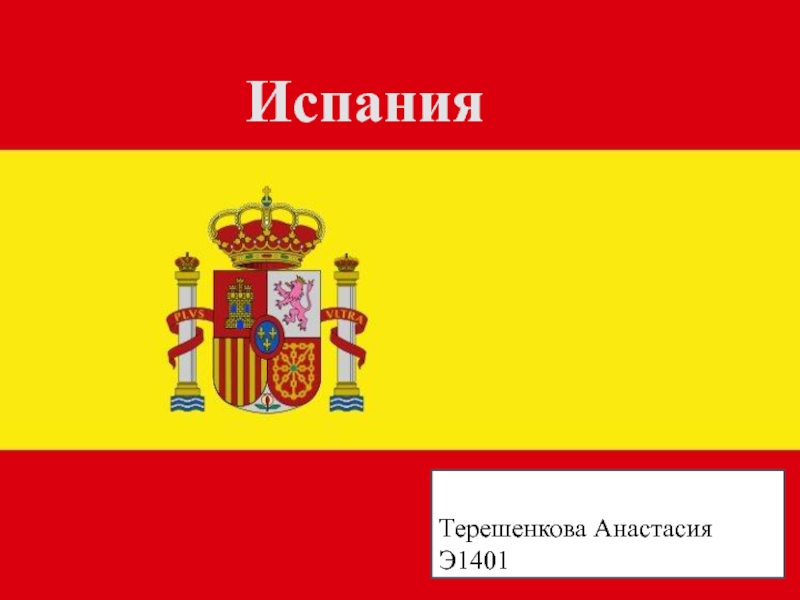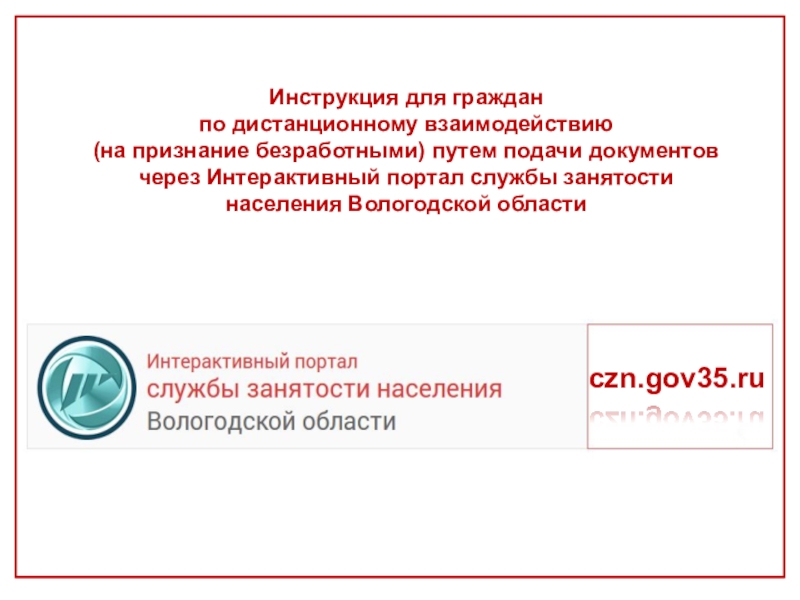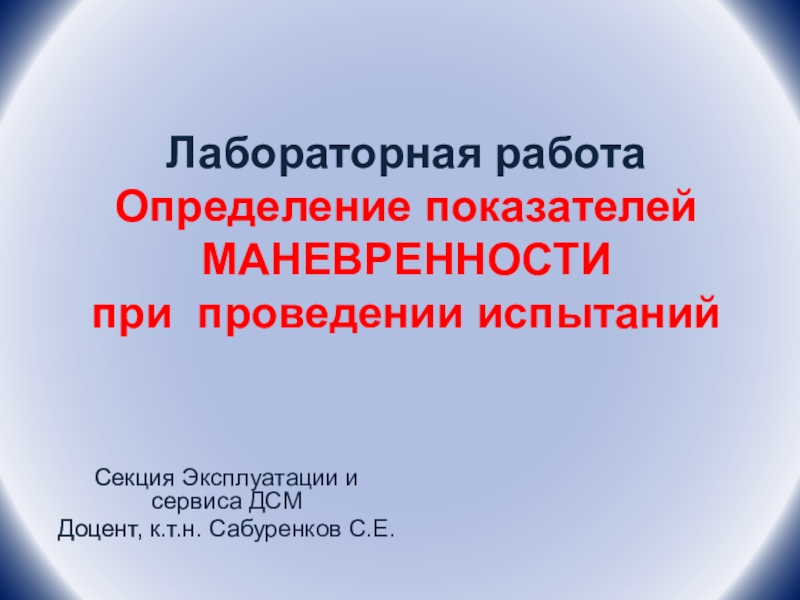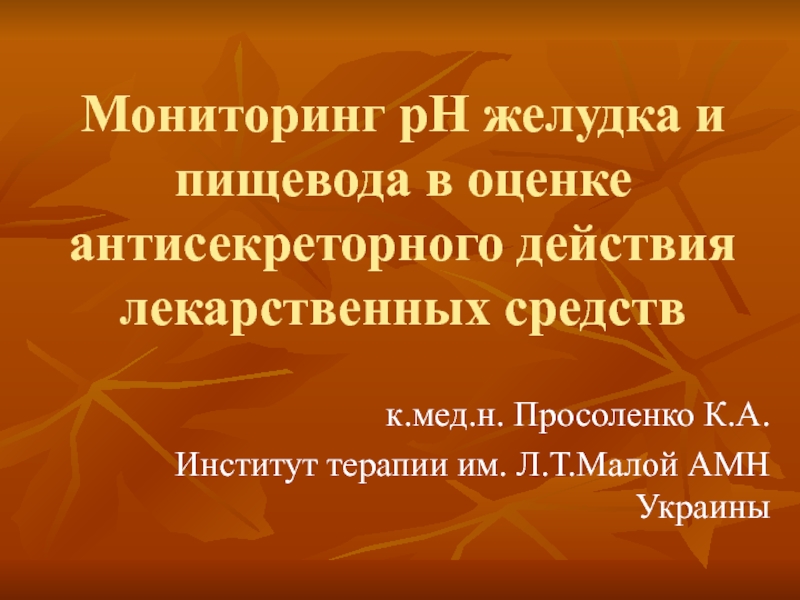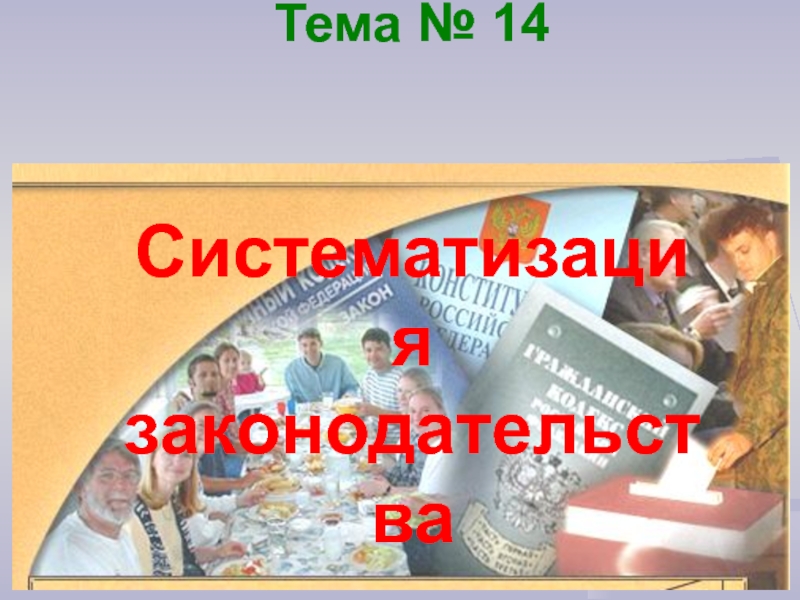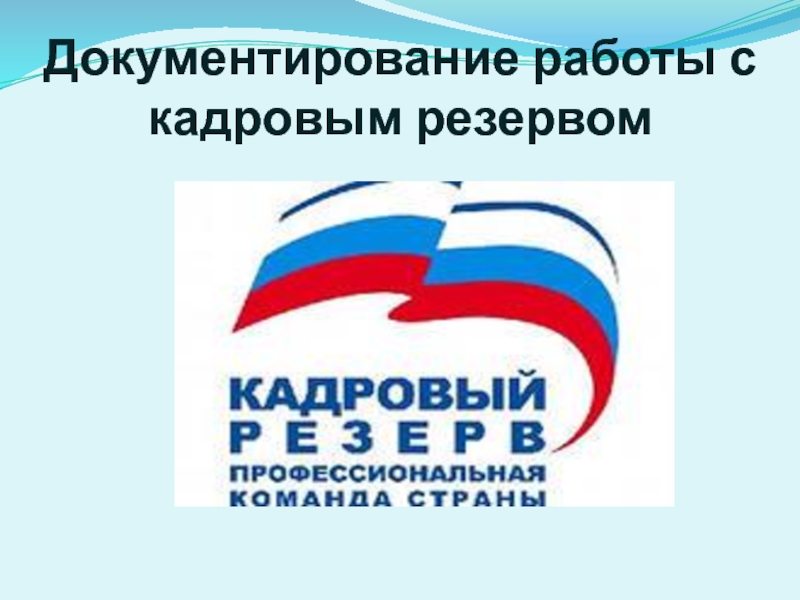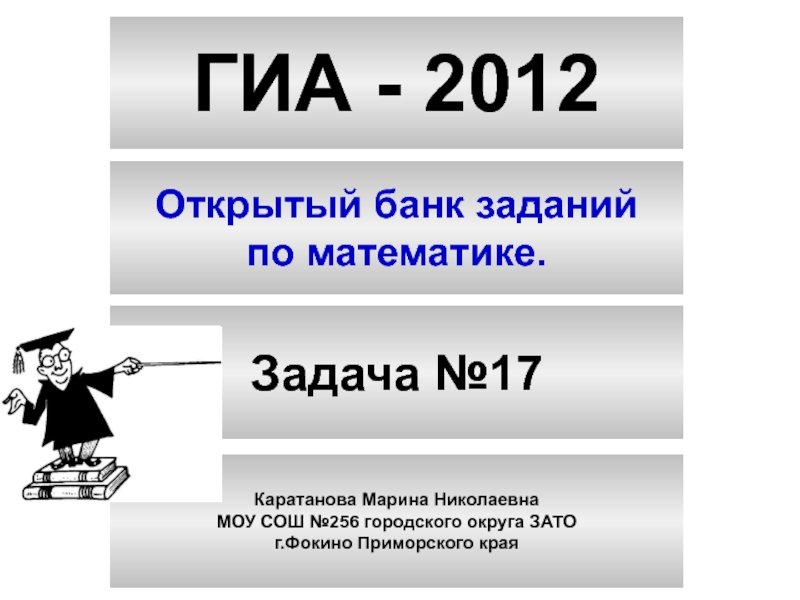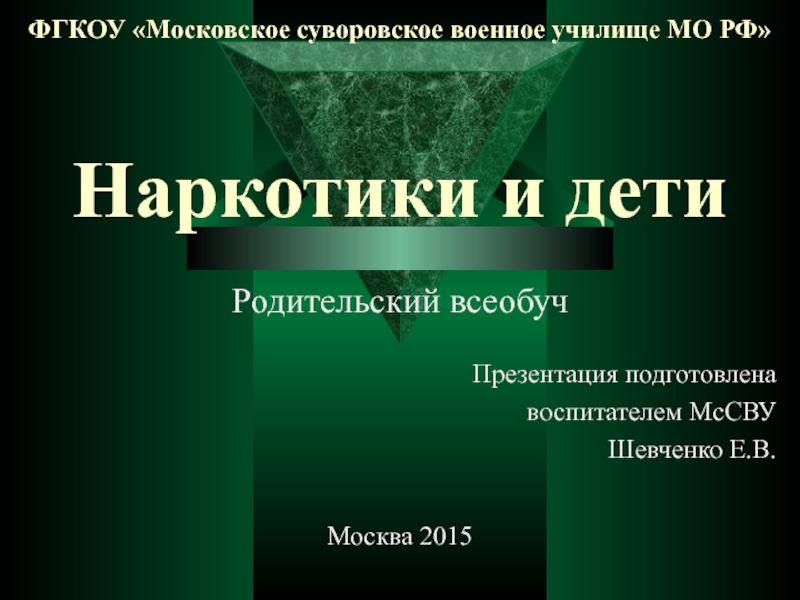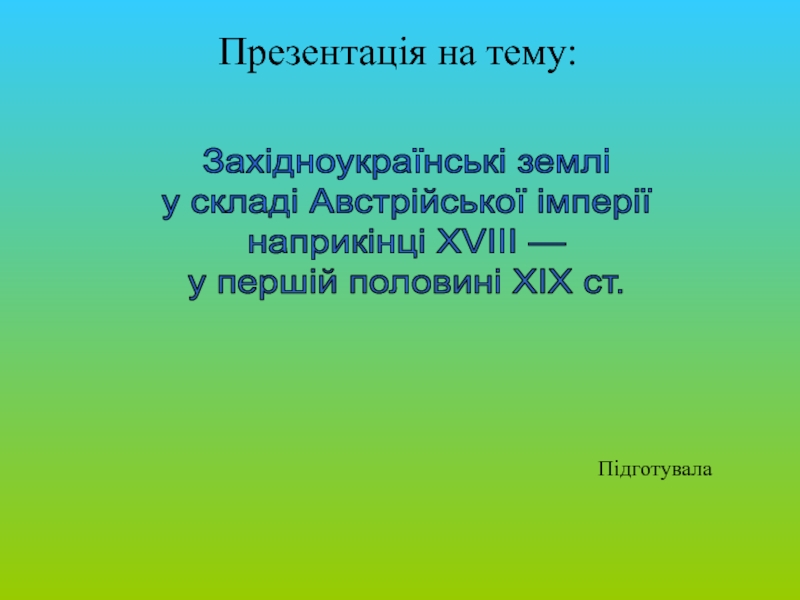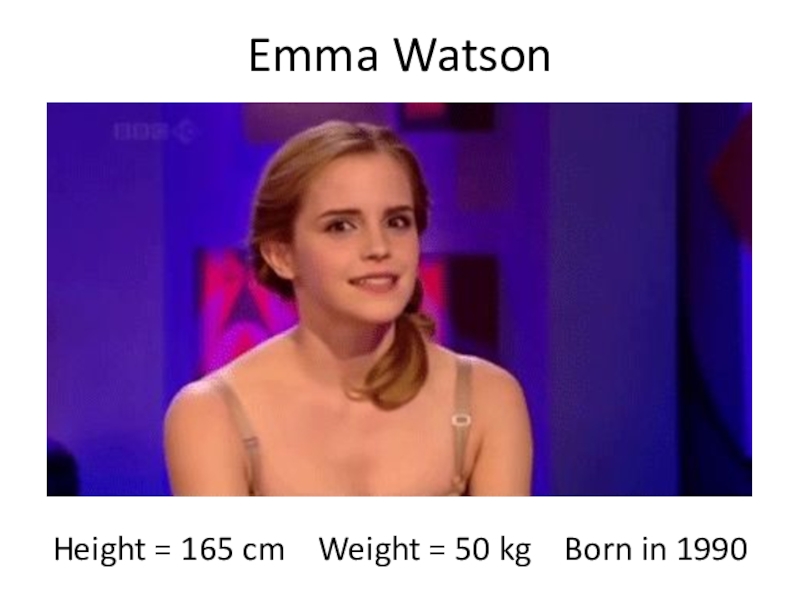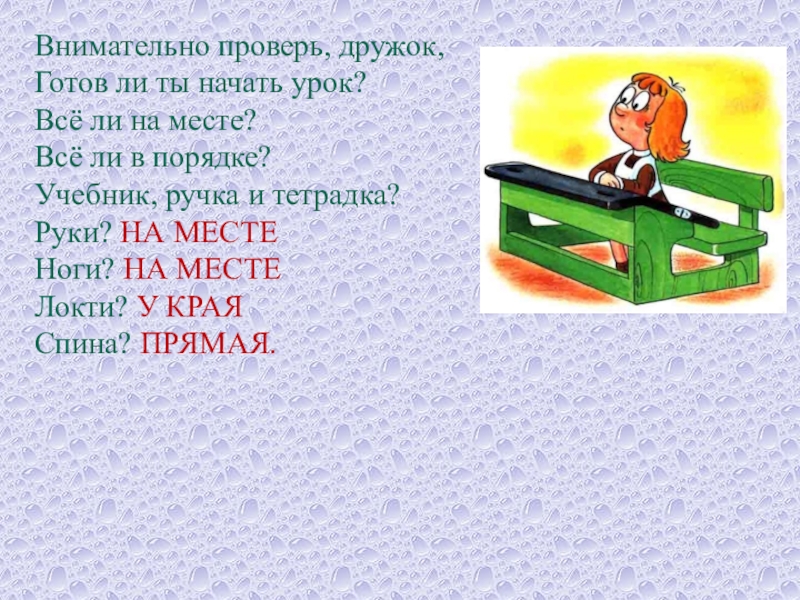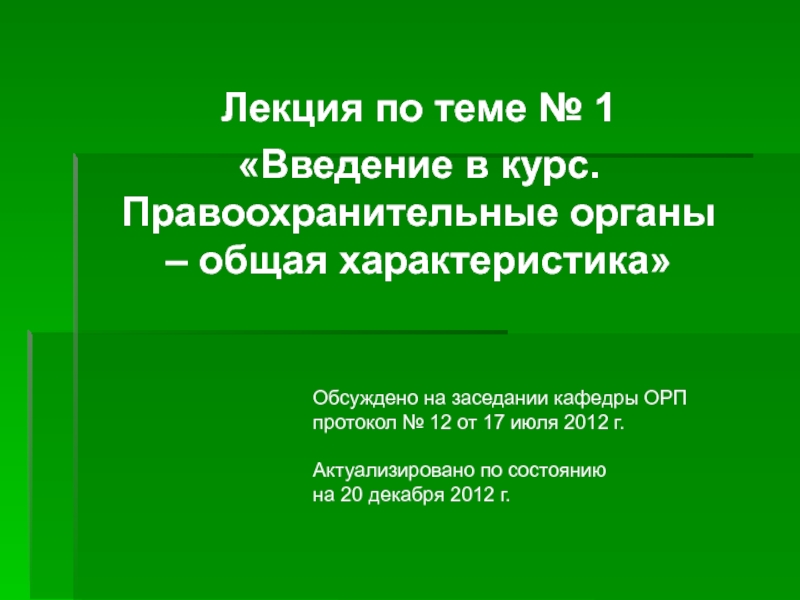Разделы презентаций
- Разное
- Английский язык
- Астрономия
- Алгебра
- Биология
- География
- Геометрия
- Детские презентации
- Информатика
- История
- Литература
- Математика
- Медицина
- Менеджмент
- Музыка
- МХК
- Немецкий язык
- ОБЖ
- Обществознание
- Окружающий мир
- Педагогика
- Русский язык
- Технология
- Физика
- Философия
- Химия
- Шаблоны, картинки для презентаций
- Экология
- Экономика
- Юриспруденция
Polysemy in Modern English
Содержание
- 1. Polysemy in Modern English
- 2. PolysemyIs the plurality of meanings A word that has more than one meaning is called polysemantic
- 3. PolysemyMonosemantic words (words having only one meaning)
- 4. Polysemy is typical of English due to
- 5. PolysemyExists in the language, not in speechAny
- 6. PolysemyThe sum total of many contexts in
- 7. Semantic structureIs a structured set of interrelated
- 8. Tablea piece of furniturethe persons seated at
- 9. Semantic structureIn every language the combination of
- 10. Semantic structureAn organized set of recurrent variants
- 11. PolysemyIs inherent in the very nature of
- 12. Approaches to the Study of PolysemyDiachronicSynchronic
- 13. DiachronicallyPolysemy is the growth and development (change,
- 14. DiachronicallyThe primary meaning is the source (often
- 15. TablePrimary (Etymological, Old English): a flat slab of stone or wood Secondary: all the rest
- 16. Semantic development of a wordRadiation (радиальное развитие, расхождение)Concatenation (последовательное соединение, сцепление, каскад)
- 17. RadiationThe primary meaning stands in the centre
- 18. Radiation Face, n Primary: the front part of
- 19. ConcatenationSecondary meanings of a word develop like
- 20. Concatenation Crust, nPrimary: hard outer part of breadSecondary:Hard
- 21. PolysemyIn most cases both ways of semantic
- 22. Polysemy: the Synchronic ApproachSynchronically polysemy is defined
- 23. SynchronicallyThe basic (central) meaning (criteria of differentiation):occurs
- 24. SynchronicallyMinor (marginal) meanings (criteria of differentiation):occur in
- 25. PolysemyThe problem of interrelation and interdependence of
- 26. Homonymy in Modern English
- 27. HomonymsWords different in meaning but identical in sound and spelling
- 28. Sources of HomonymySplit polysemy (divergence of word
- 29. Sources of HomonymyAffixation (the same affix is
- 30. Sources of HomonymyBy accident (two words coincide
- 31. Classification of Homonyms: according to the spelling and sound formPerfect homonymsHomophonesHomographs (classified by Walter Skeat)
- 32. Perfect homonymsWords identical both in sound and
- 33. HomophonesWords identical in their phonetics but different in their spellingNight vs knightNose vs knowsI vs eye
- 34. HomographsWords identical in their spelling but different
- 35. Classification of homonyms: according to the grammatical meaningPerfect (absolute)Homoforms (classified by A. Smirnitsky)
- 36. Perfect (absolute) homonymsWords which are identical in
- 37. HomoformsWords coinciding in their spelling and phonetics
- 38. Classification of perfect homonyms by I. Arnold Criteria:Lexical meaningGrammatical meaningBasic formsParadigms
- 39. Group 1Homonyms identical in their grammatical meanings,
- 40. Group 2Homonyms identical in their grammatical meanings
- 41. Group 3Homonyms identical in their basic forms
- 42. Group 4Homonyms different in their basic forms,
- 43. Patterned homonymsHomonymous words having a common component
- 44. Thank you for your attention!
- 45. Скачать презентанцию
PolysemyIs the plurality of meanings A word that has more than one meaning is called polysemantic
Слайды и текст этой презентации
Слайд 2Polysemy
Is the plurality of meanings
A word that has more
than one meaning is called polysemantic
Слайд 3Polysemy
Monosemantic words (words having only one meaning) are few in
number (mainly, scientific terms)
The majority of English words are polysemantic
(the number of meanings ranging from 5 to over 100)The commoner the word, the more meanings it has
Слайд 4Polysemy is typical of English
due to the monosyllabic character
of the English vocabulary
due to the predominance of root
wordsСлайд 5Polysemy
Exists in the language, not in speech
Any word used actually
has only one meaning which is referred to as contextual
Слайд 6Polysemy
The sum total of many contexts in which the word
may occur permits to observe and record cases of identical
meaning and cases that differ in meaningThe analysis of the word’s recurrent meanings enables to make up its semantic structure
Слайд 7Semantic structure
Is a structured set of interrelated meanings which come
together due to the proximity of notions they express
Слайд 8Table
a piece of furniture
the persons seated at a table
the food
put on a table, meals
a thin flat piece of stone,
metal, wood, etc.an orderly arrangement of facts, figures, etc.
Etc.
Слайд 9Semantic structure
In every language the combination of meanings is specific
and often depends on the grammatical categories characteristic of the
part of speech to which the word belongs:English nouns combine individual and collective, countable and uncountable variants
English verbs – transitive and intransitive lexico-semantic variants,
Etc.
Слайд 10Semantic structure
An organized set of recurrent variants and shades of
meaning a given sound complex can assume in different contexts
together with their emotional colouring, stylistic peculiarities and other typical connotationsСлайд 11Polysemy
Is inherent in the very nature of words and notions
as they always contain a generalization of several traits of
the objectSome of the traits prove to be common with other objects
There is a possibility of identical names for objects possessing common features
Слайд 13Diachronically
Polysemy is the growth and development (change, in general) of
the word’s semantic structure
A word may retain its previous meaning(s)
and acquire one or several new meanings at the same timeСлайд 14Diachronically
The primary meaning is the source (often etymological) meaning of
the word which gave rise to the secondary meanings
The secondary
meaning is the meaning derived from the primary meaning, dependent on it and somehow subordinate to itСлайд 15Table
Primary (Etymological, Old English): a flat slab of stone or
wood
Secondary: all the rest
Слайд 16Semantic development of a word
Radiation (радиальное развитие, расхождение)
Concatenation (последовательное соединение,
сцепление, каскад)
Слайд 17Radiation
The primary meaning stands in the centre and the secondary
meanings proceed out of it like rays (each secondary meaning
may be traced to the primary meaning)Слайд 18Radiation
Face, n
Primary: the front part of the human head
Secondary:
the front part of a building,
the front part of
a watch, the front part of a playing card, etc.
Слайд 19Concatenation
Secondary meanings of a word develop like a chain, which
makes it difficult to trace some of the meanings to
the primary oneСлайд 20Concatenation
Crust, n
Primary: hard outer part of bread
Secondary:
Hard part of anything
(a pie, a cake, etc.)
Harder layer over soft snow
A sullen
gloomy personImpudence (дерзость, наглость, нахальство, бесстыдство, etc.)
Слайд 21Polysemy
In most cases both ways of semantic development are combined
When the word meanings diverge so much that the logical
link is lost, there develops the so called split polysemy which gives rise to homonymy in the languageСлайд 22Polysemy: the Synchronic Approach
Synchronically polysemy is defined as the coexistence
of various meanings of the same word at a certain
historical period of the development of the languageСлайд 23Synchronically
The basic (central) meaning (criteria of differentiation):
occurs in various and
widely different contexts
is frequent in speech
is stylistically neutral
Table:
a piece of furnitureСлайд 24Synchronically
Minor (marginal) meanings (criteria of differentiation):
occur in only a few
contexts
are infrequent in speech
may have a stylistic colouring
Table:
a group of people seated at a table (to keep the table amused)Table: an orderly arrangement of facts, figures, etc. (table of contents)
Слайд 25Polysemy
The problem of interrelation and interdependence of various meanings of
the same word
The semantic structure of a polysemantic word is
not homogeneous: some of the word meanings are recognized in isolation, others are perceived only in certain contextsThe semantic structure of correlated polysemantic words of different languages is never identical: the basic meanings coincide, while the marginal meanings diverge
Слайд 28Sources of Homonymy
Split polysemy (divergence of word meanings so that
the logical link is lost)
Leveling of grammar inflexions (different parts
of speech become identical in their outer aspect : care, n from «caru» and care, v from «carian»)Conversion (slim – to slim, water – to water, etc.)
Слайд 29Sources of Homonymy
Affixation (the same affix is added to the
same stem twice to form two different words: read-er –
a person who reads vs read-er – a book for reading)Shortening (abbreviation):
bio- (a combining form with the meaning of «life») in «biology», «biometrics» vs bio (a shortening from «biography»)
cab (a shortening from «cabriolet», «cabbage», «cabin»)
COD («Concise Oxford Dictionary» and «cash on delivery»)
Слайд 30Sources of Homonymy
By accident (two words coincide in their development):
bear (from OE beran, to carry) vs bear (from OE
bera, an animal)fair (from Latin feria) vs fair (from OE fager, blond)
base (from French base, Latin basis) vs base (from Italian basso, Latin bas)
Слайд 31Classification of Homonyms:
according to the spelling and sound form
Perfect homonyms
Homophones
Homographs
(classified
by Walter Skeat)
Слайд 32Perfect homonyms
Words identical both in sound and spelling
School – школа
vs school – косяк рыбы
Flounder – камбала vs flounder –
затруднительное положениеСлайд 33Homophones
Words identical in their phonetics but different in their spelling
Night
vs knight
Nose vs knows
I vs eye
Слайд 34Homographs
Words identical in their spelling but different in their phonetics
Bow
[bau] – поклон vs bow [bou] – лук
Tear [tia]
– слеза vs tear [tea] – рвать на частиСлайд 35Classification of homonyms: according to the grammatical meaning
Perfect (absolute)
Homoforms
(classified
by A. Smirnitsky)
Слайд 36Perfect (absolute) homonyms
Words which are identical in spelling, pronunciation and
grammar form (such homonyms always belong to the same part
of speech)Spring (the season of the year) vs spring (a leap) and spring (a source)
Слайд 37Homoforms
Words coinciding in their spelling and phonetics but having different
grammatical meaning (such words always belong to different parts of
speech or different categories of the same part)Reading (Participle 1, gerund, verbal noun)
Lobby (v) vs lobby (n)
Etc.
Слайд 38Classification of perfect homonyms by I. Arnold
Criteria:
Lexical meaning
Grammatical meaning
Basic
forms
Paradigms
Слайд 39Group 1
Homonyms identical in their grammatical meanings, basic forms and
paradigms but different in their lexical meanings:
Board (council) vs
board (a piece of wood sawn thin)Слайд 40Group 2
Homonyms identical in their grammatical meanings and basic forms
but different in their lexical meanings and paradigms :
Lie
– lied – lied vs lie – lay – lain Слайд 41Group 3
Homonyms identical in their basic forms but different in
their lexical meanings, grammatical meanings and paradigms:
Light, n (lights) vs
light, adj (lighter, lightest)Слайд 42Group 4
Homonyms different in their basic forms, their lexical meanings,
grammatical meanings and paradigms but identical in on of the
forms of their paradigms:Bit, n vs bit, v (from bite)
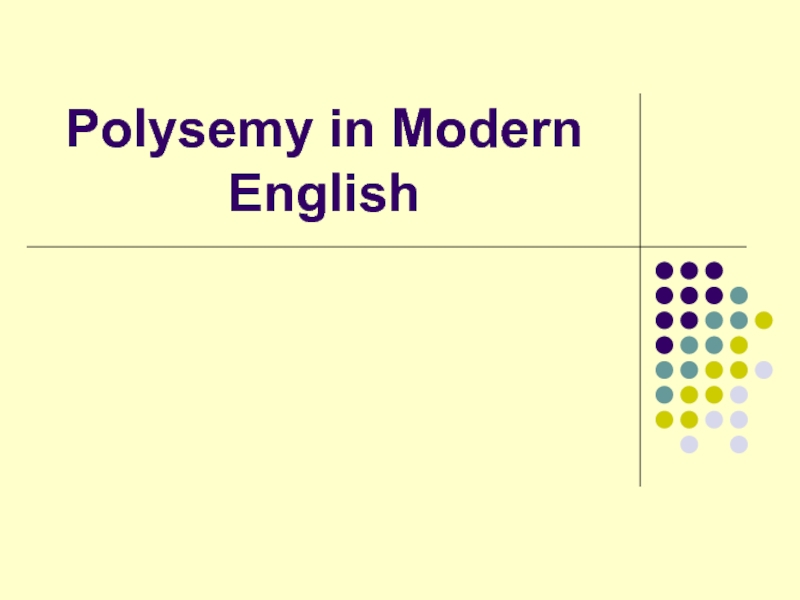
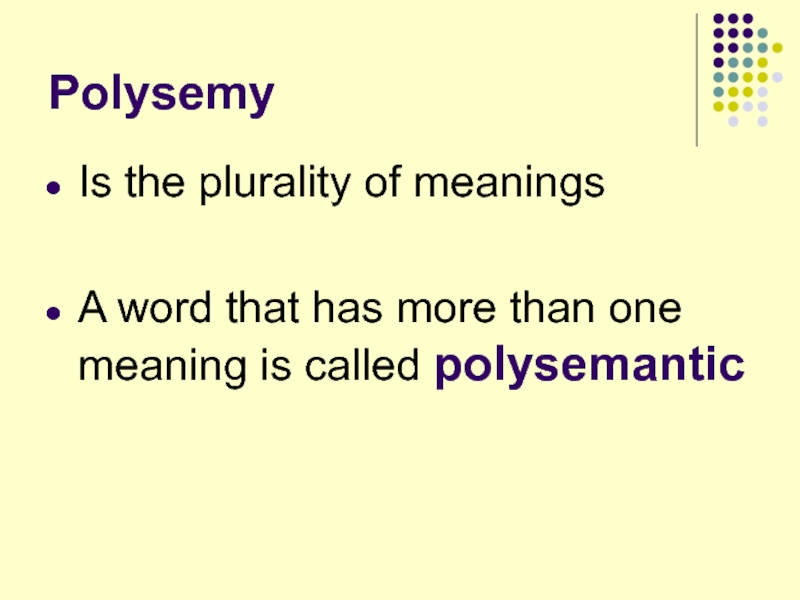
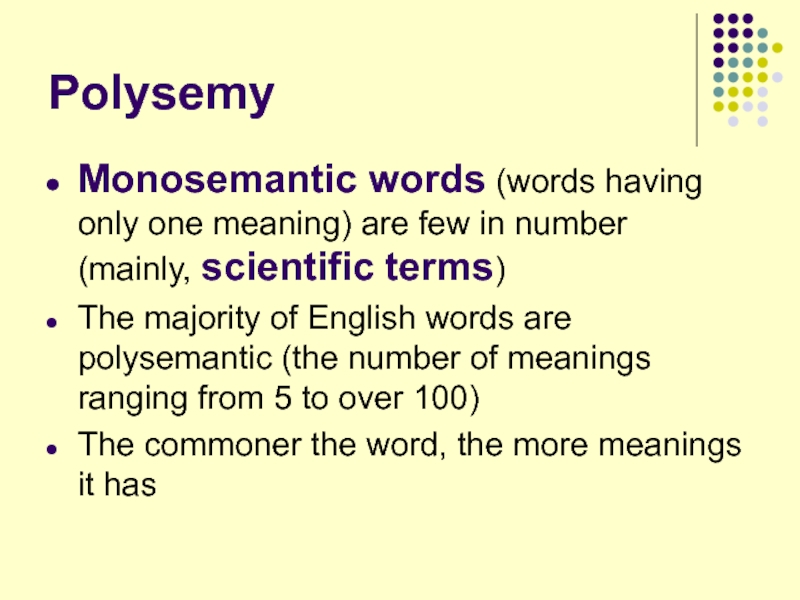
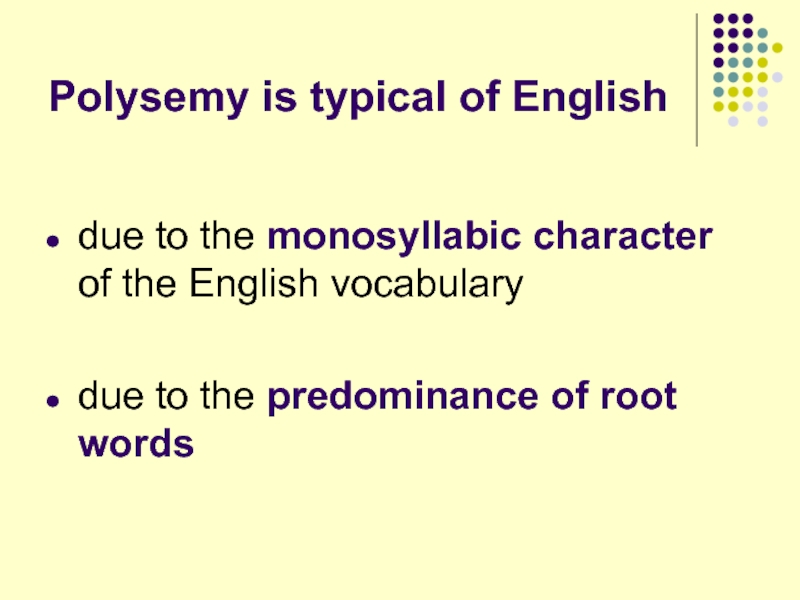
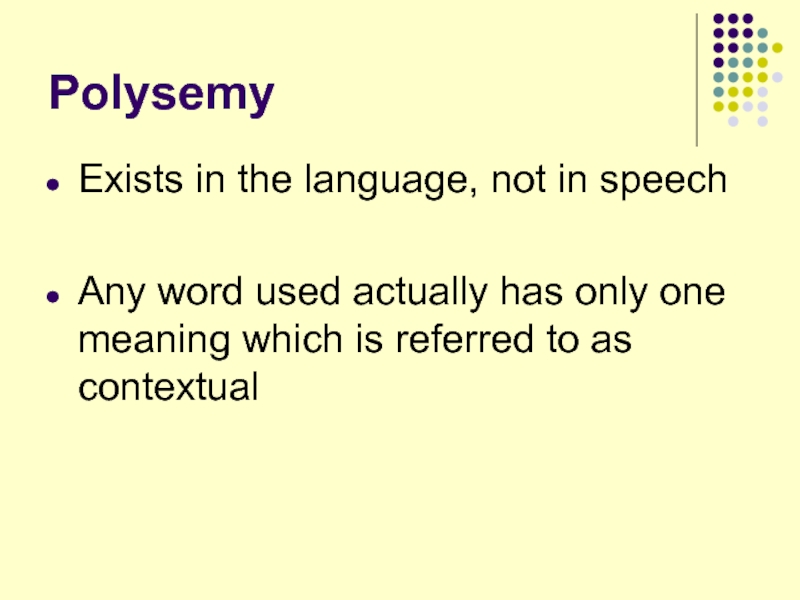
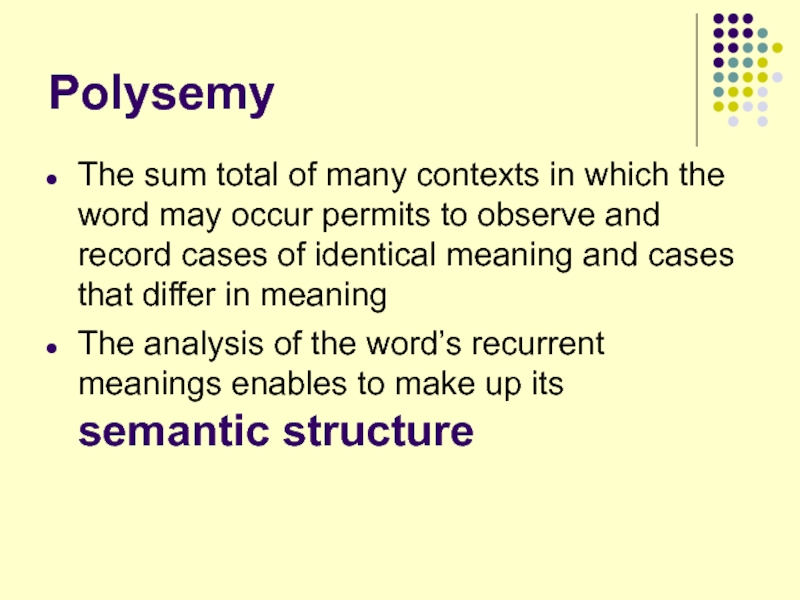
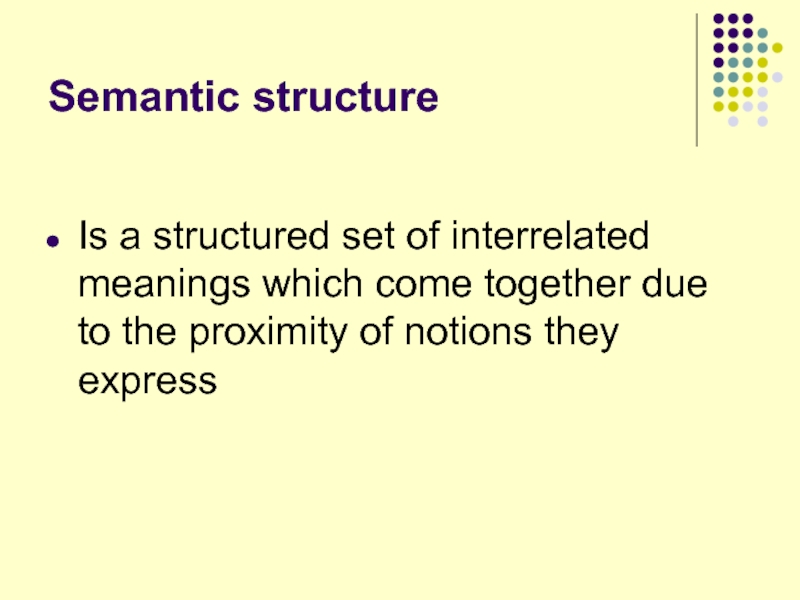
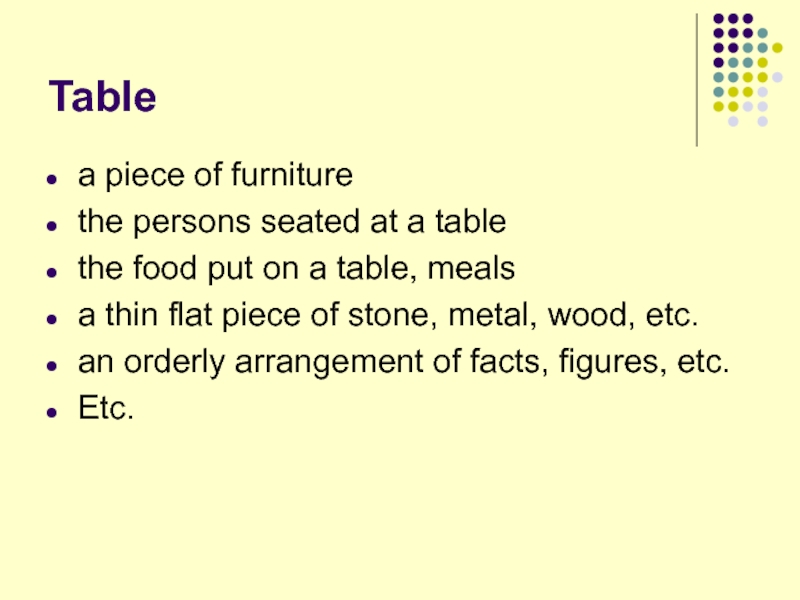
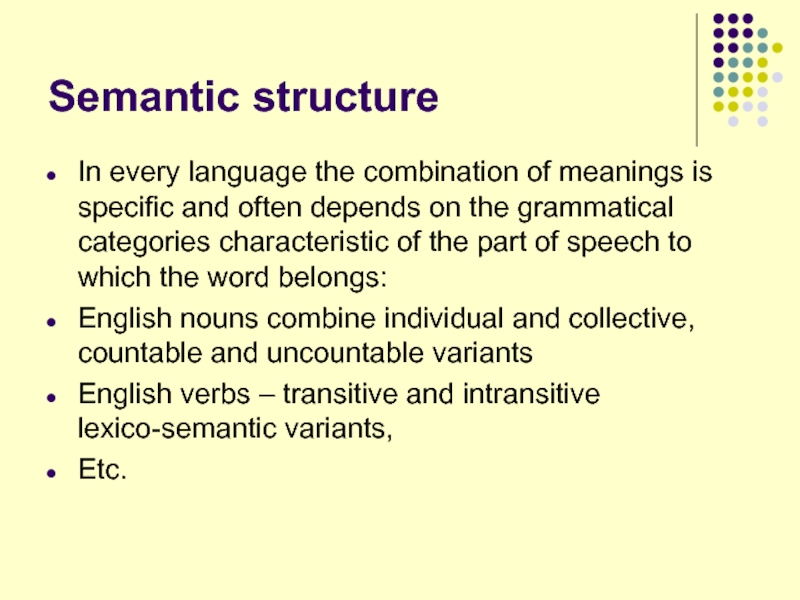
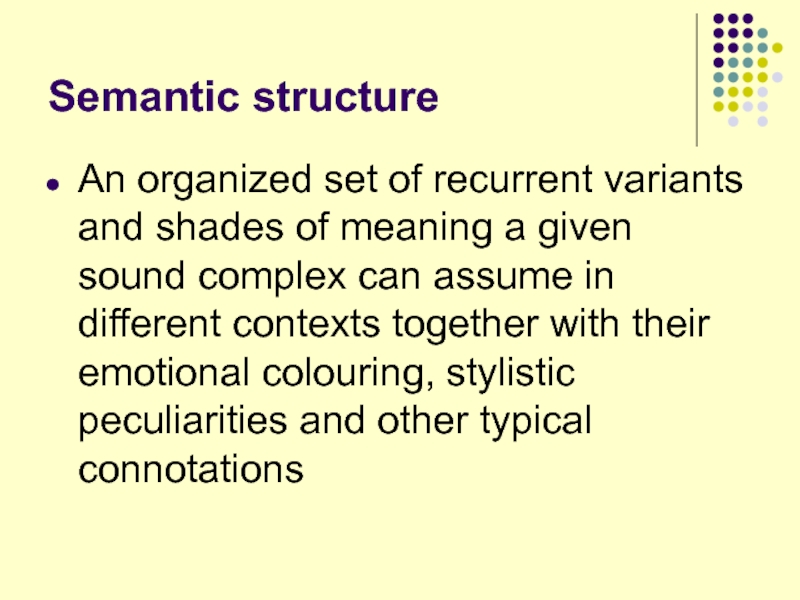
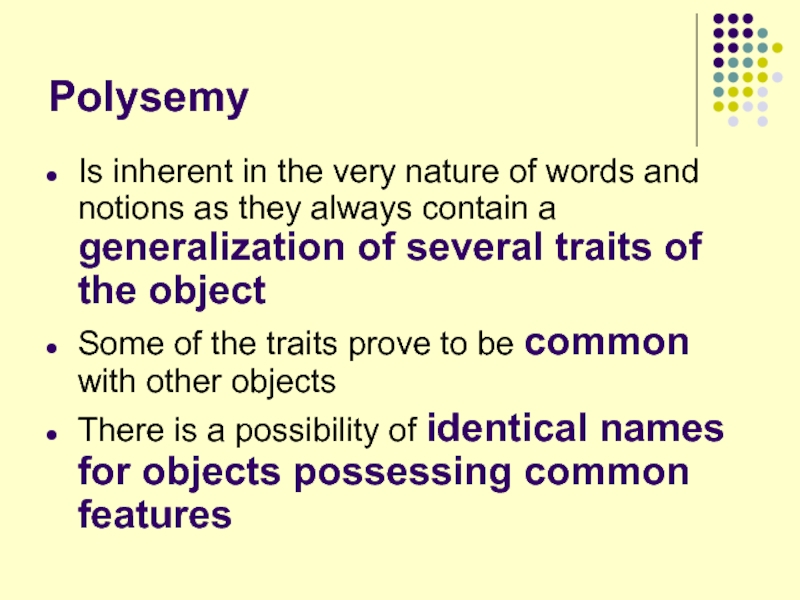
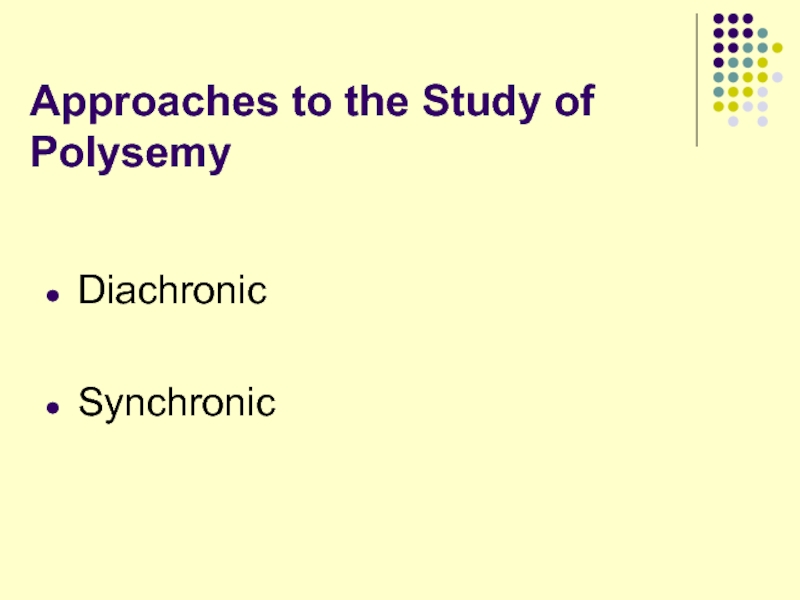
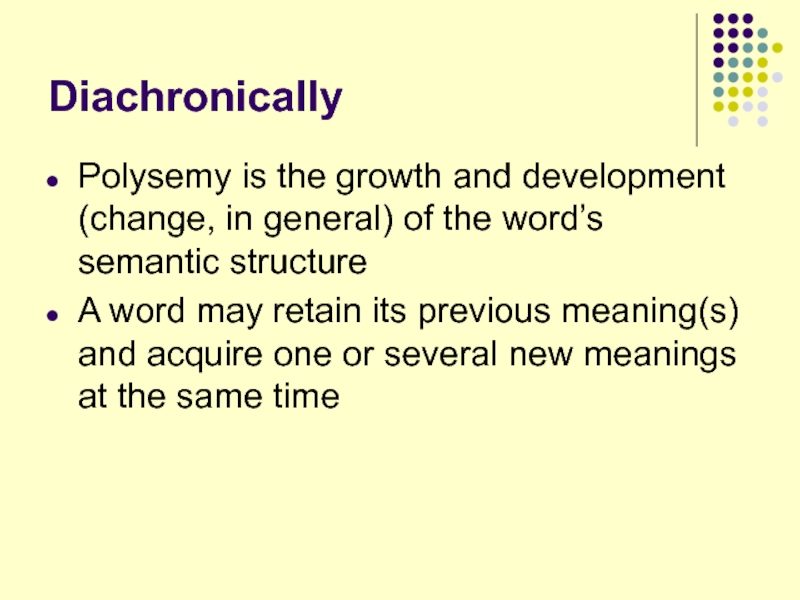
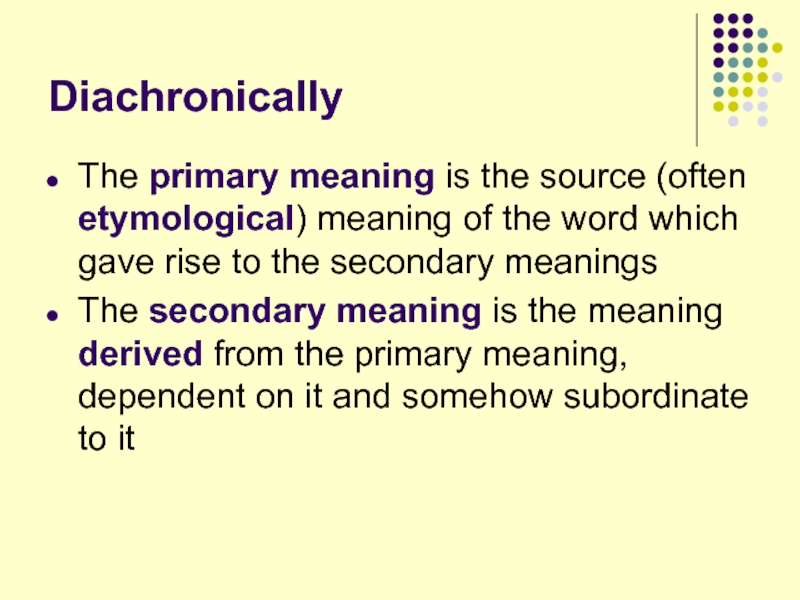
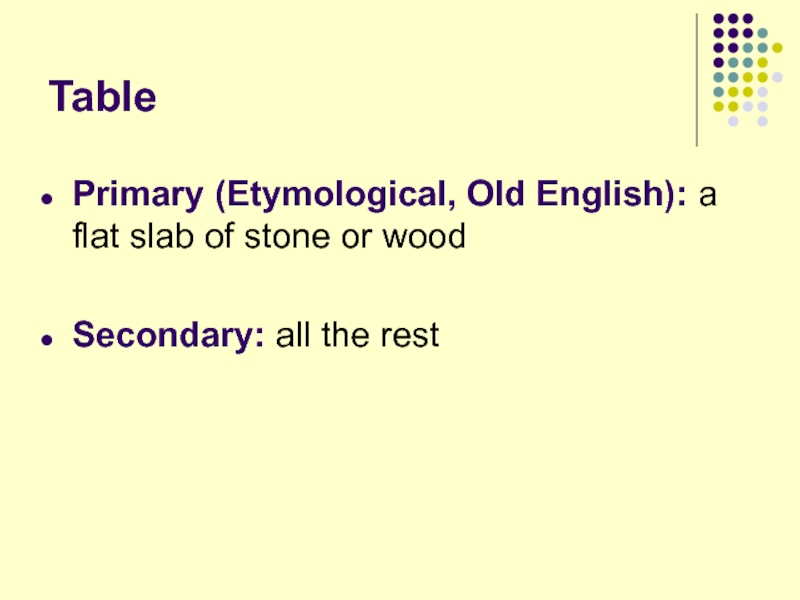
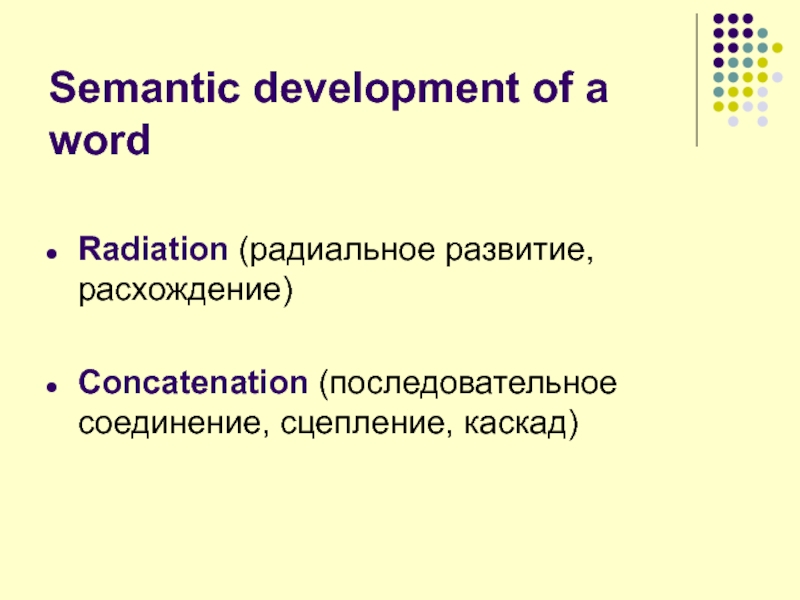
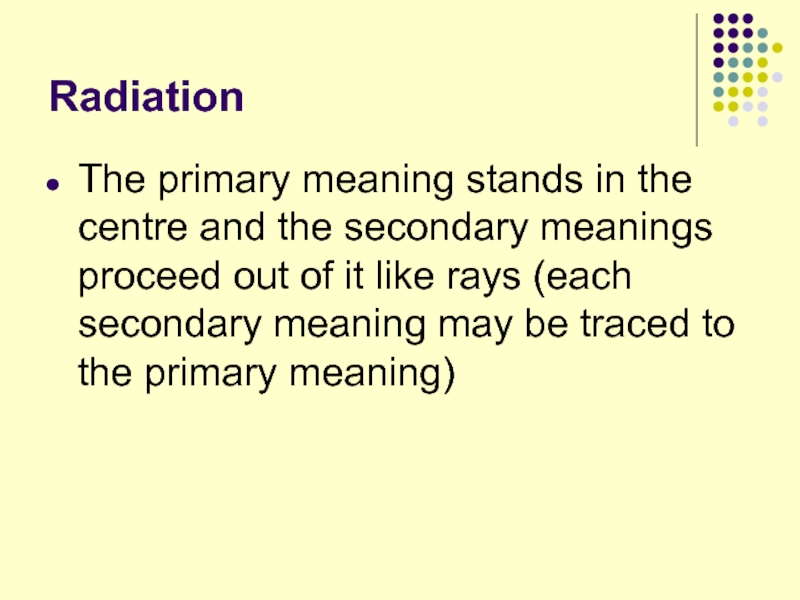
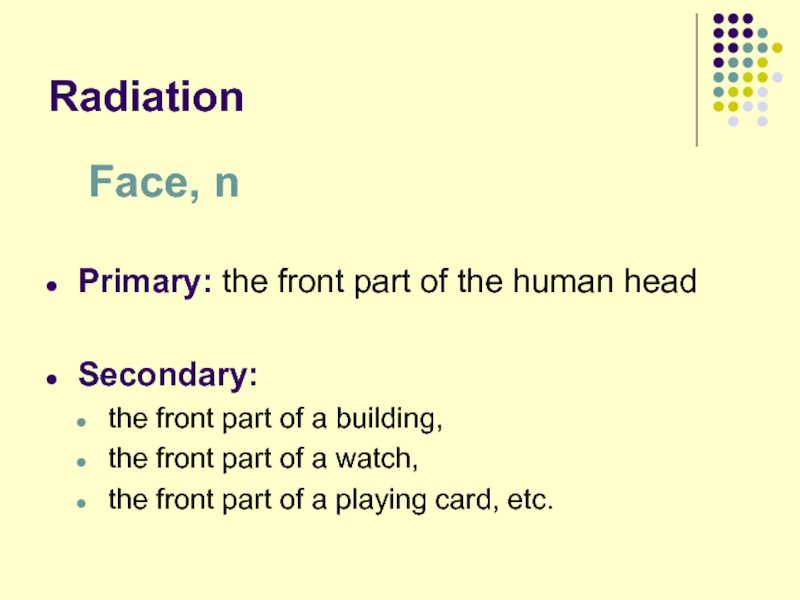
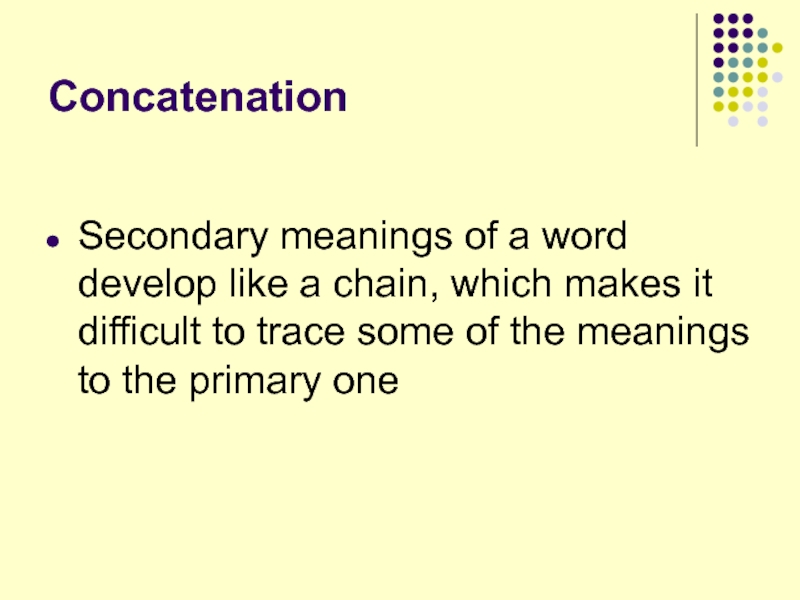
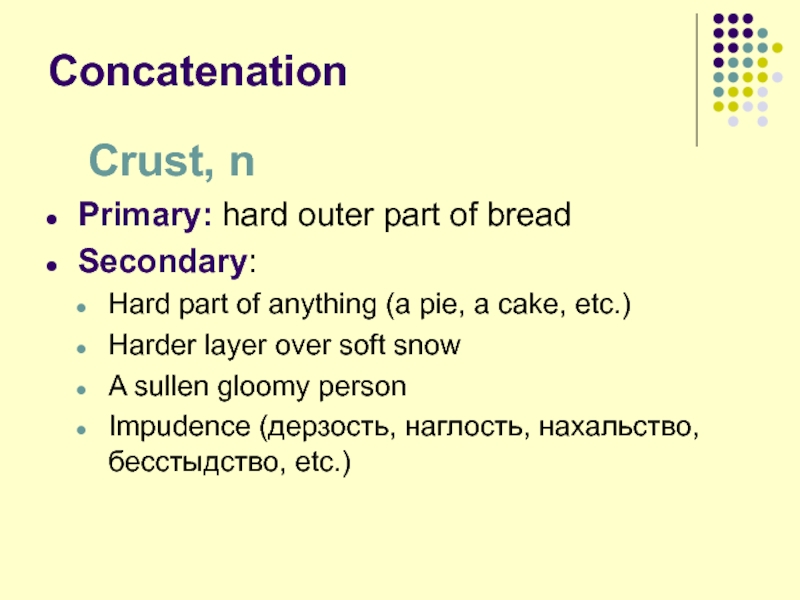
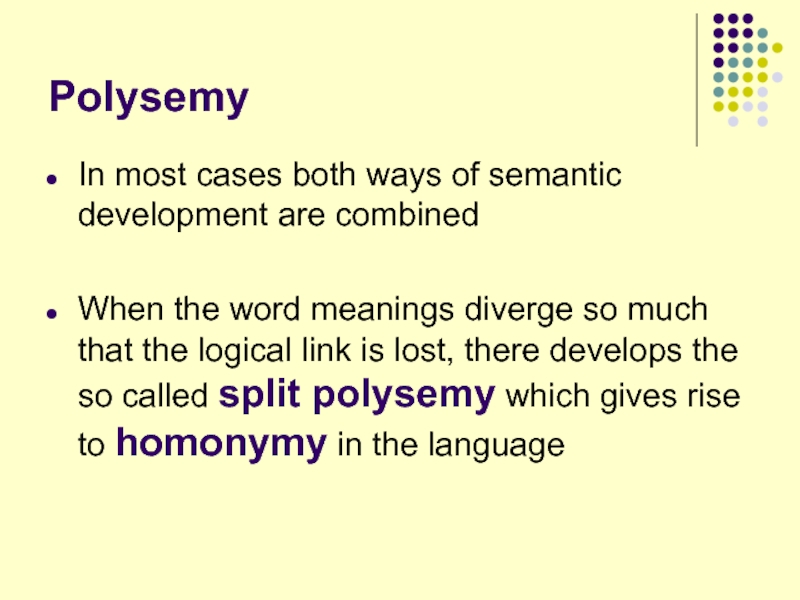
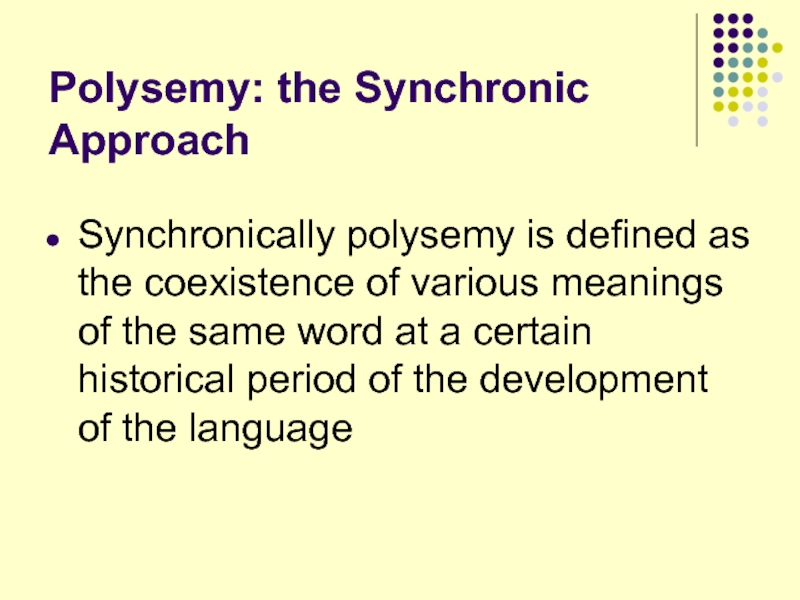
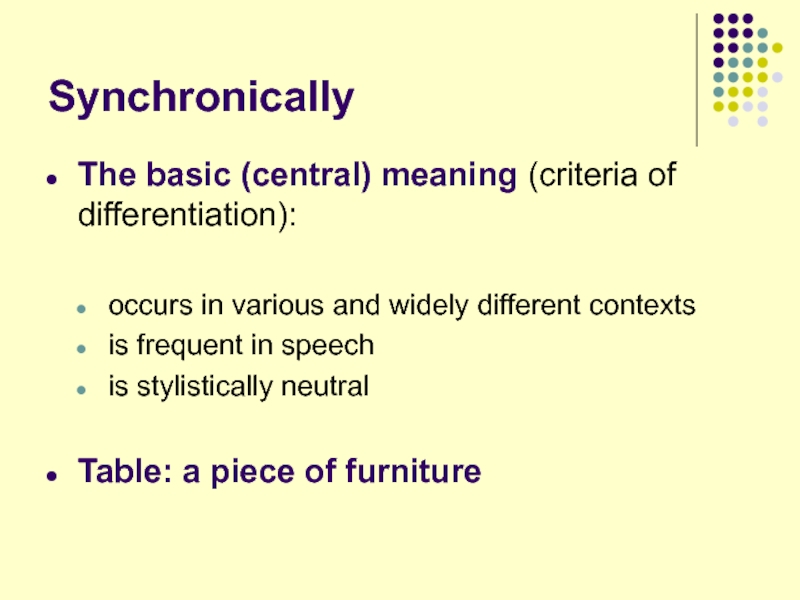
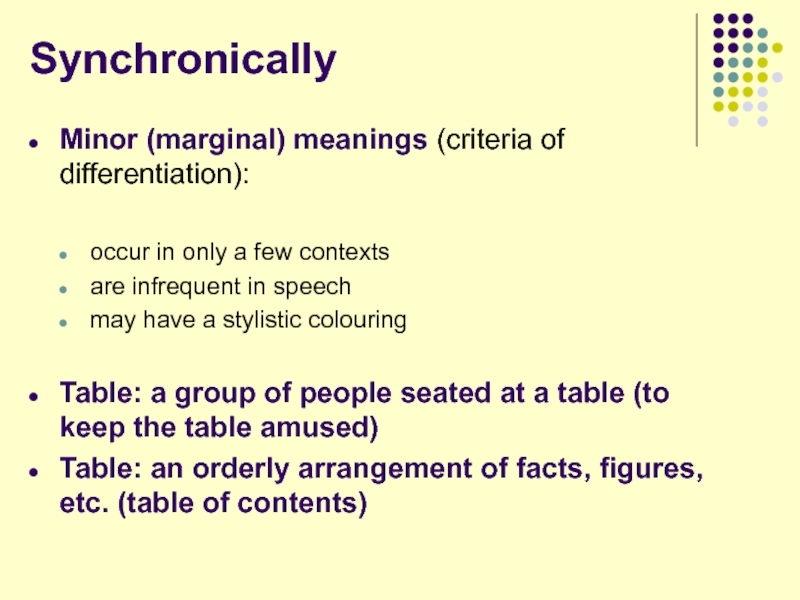
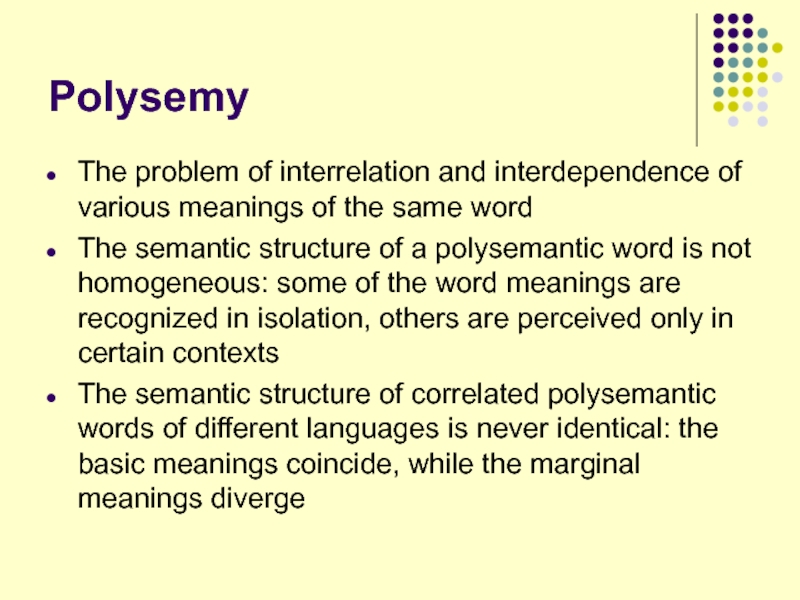
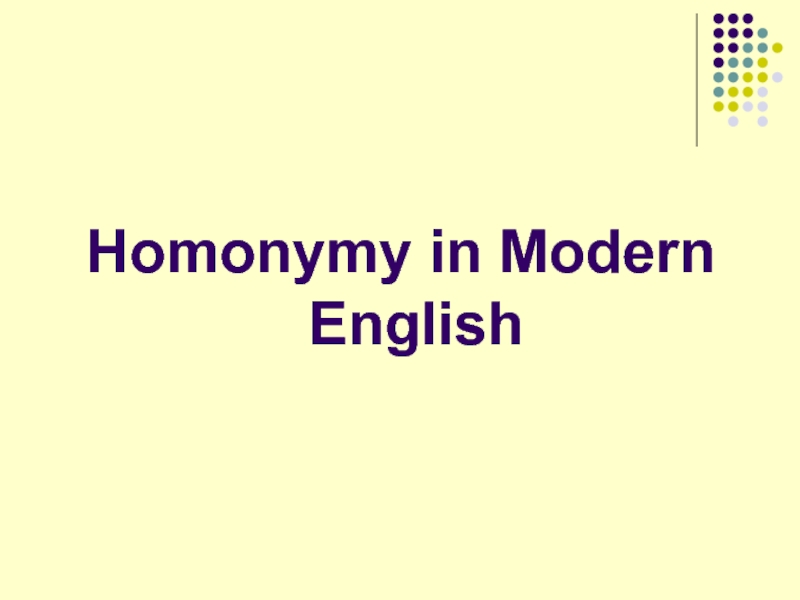
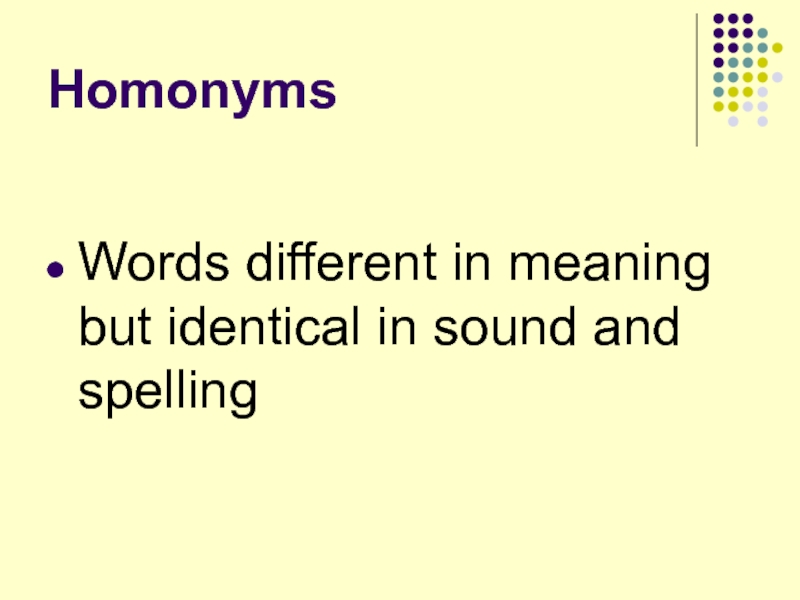
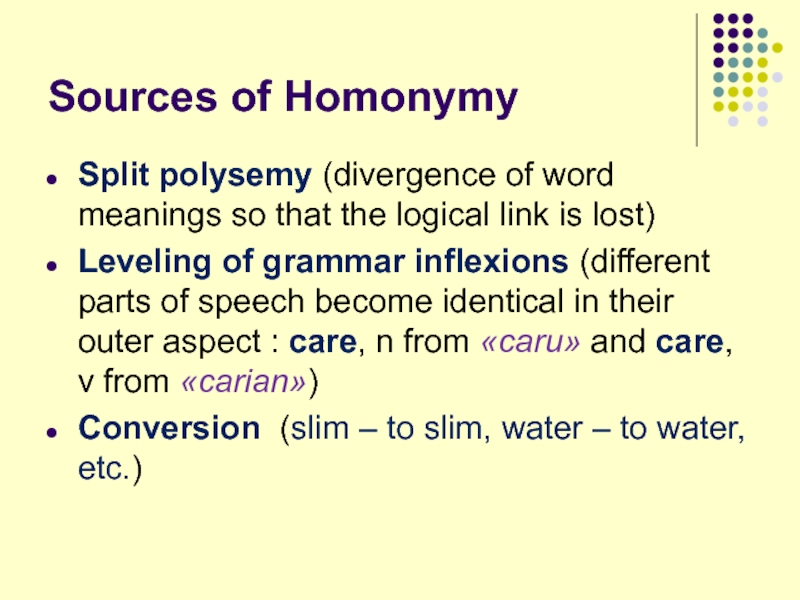
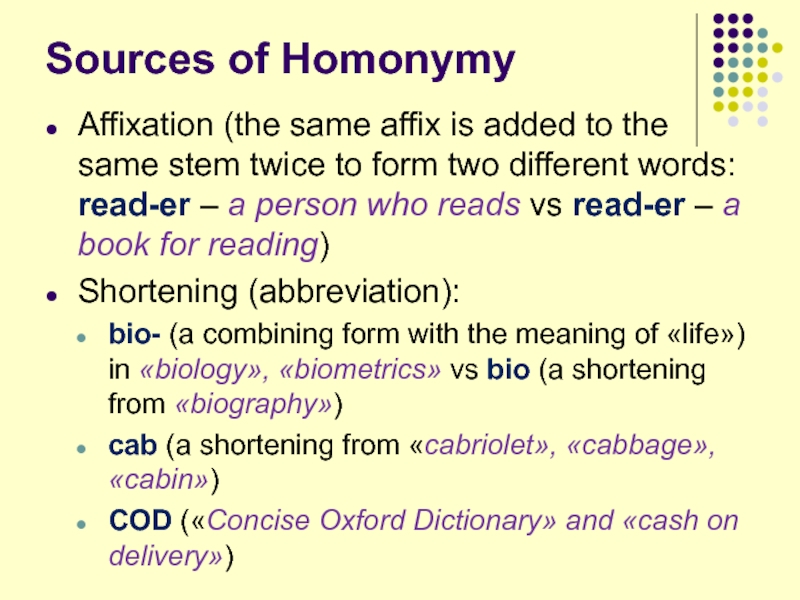
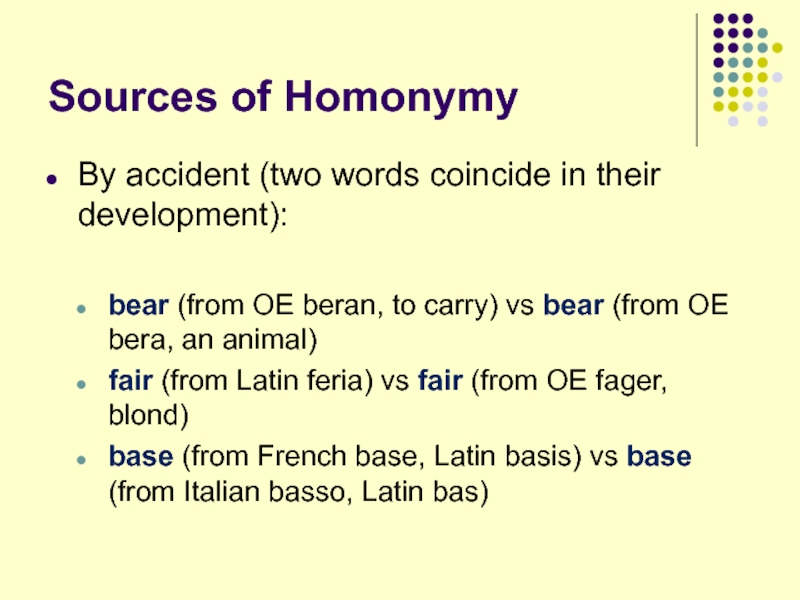
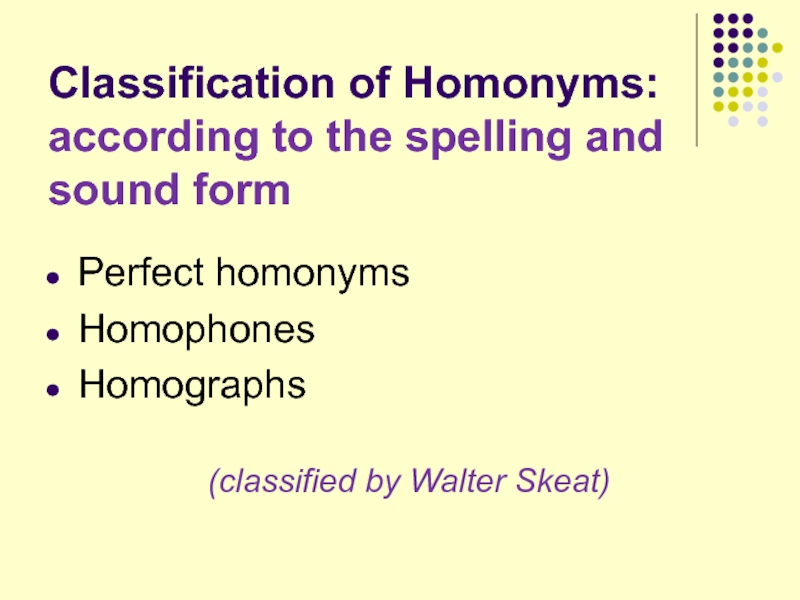
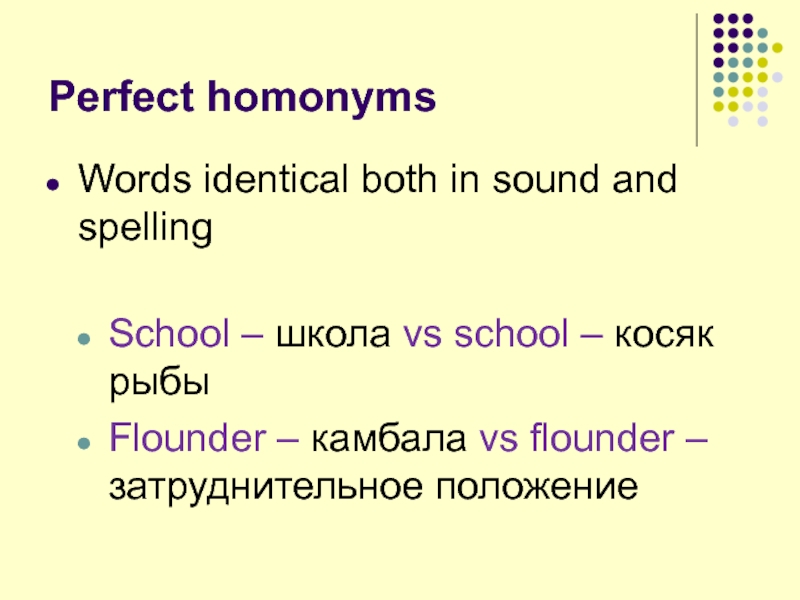
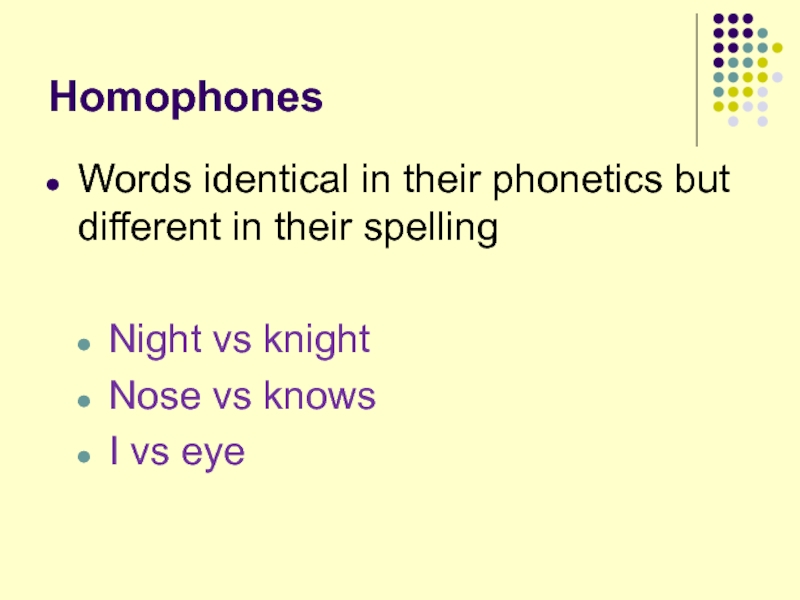
![Polysemy in Modern English HomographsWords identical in their spelling but different in their phoneticsBow [bau] HomographsWords identical in their spelling but different in their phoneticsBow [bau] – поклон vs bow [bou] –](/img/thumbs/f57caca654fd877b12c75dc443665ced-800x.jpg)
